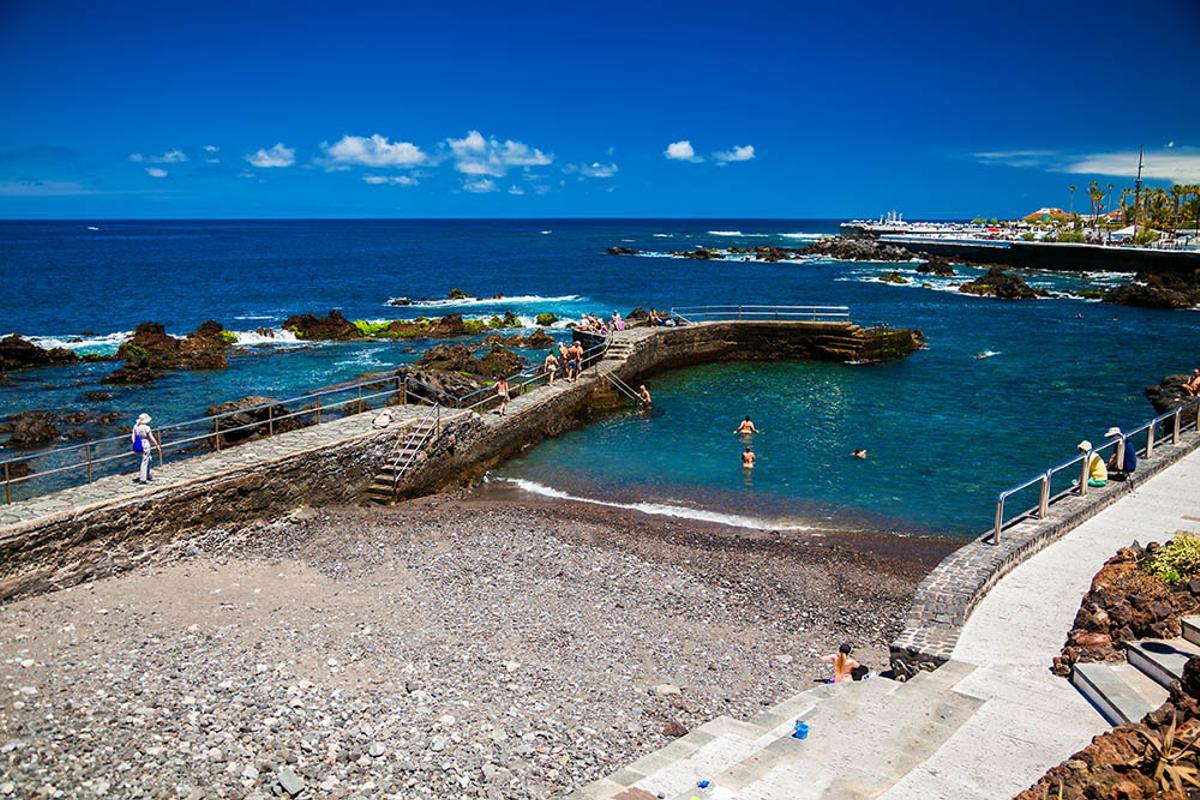Puerto de la Cruz, the heart of tourism in Tenerife, is confronted with a serious issue concerning wastewater discharges into the sea and the FOCOS pollutants. These issues are not confined to Playa Jardín, which has been closed for swimming for over eight months, and currently deserves the focus of both political and media attention. A recent report from the Canary Islands provides the first official assessment of the sources behind the environmental catastrophe at Playa Jardín, the most significant crisis the island of Tenerife faces at present.
The investigation, carried out by Elitoral – a consultancy specialising in marine environments for the General Directorate of Ecological Transition of the Canarian Government – highlights other spill sites along the coast in Puerto de la Cruz that, although they have not yielded analyses leading to public health warnings as seen at Playa Jardín, still pose a serious risk that authorities must tackle without delay.
According to the report, dated January 29, there are two particular locations of concern. Both are in close proximity to one another: the small San Telmo Beach and the tourist pool complex known as Lake Martiánez. These areas attract numerous visitors. The document states, «It is remarkable» that there has been a detection of faecal pollution at point MM8, situated in a zone influenced by the discharge from the San Telmo pumping station and near the Lake Martiánez tourist complex.

San Telmo Beach with Lake Martiánez in the background, located in Puerto de la Cruz. / Ed
The sampling point MM8 is located just offshore from San Telmo, a modest black sand beach approximately 20 metres in length, which features natural pools where bathers frequent, all situated within a highly populated urban area near Martiánez. There, the analytical results for enterococci, a type of bacteria present in faecal matter, have reached levels nearing the regulatory threshold: 400 when the limit stands at 500. Once this index exceeds 500, pollution is considered to surpass the acceptable limit, consequently necessitating a closure for swimming, as was the case at Playa Jardín.
The issue arises from two infrastructural failings overseen by the local council. One of these is the San Telmo pumping station, which is crucial for the sanitation system as it pumps the wastewater collected in the sewer system to treatment plants, specifically that of Punta Brava, ensuring it undergoes decontamination.
The Canarian government report also mentions aliviaderos linked to this pumping station. Aliviaderos are pipes designed to channel both wastewater and rainwater, diverting surplus or contaminated flows during times when the treatment plant’s capacity is exceeded.

Lake Martiánez, located in Puerto de la Cruz. / Ed
The conclusions presented by Elitoral are quite emphatic. At Lake Martiánez, designed by César Manrique and completed in 1977, the presence of numerous active discharge points has been identified, of which five lack authorisation and, as a result, oversight. Additionally, concerning the pumping station and the San Telmo overflow, the report indicates that the latter is unauthorised and recommends «improving discharge management and monitoring until it is confirmed that the levels of pollution are reduced.»
Similar to the situation at Playa Jardín, these issues were known previously, yet no corrective actions have been taken to mitigate pollution. A public health report from 2022, produced by a control body affiliated with the Canarian government, had already raised concerns regarding San Telmo: «Water quality for swimming at San Telmo Beach has deteriorated progressively from 2016 to 2021, as evidenced by the increasing levels of faecal pollution indicators.» Of the 217 samples tested at San Telmo during that time, “ten samples showed values consistent with microbiological contamination.” Three years on, the situation remains unchanged, with indicators showing that discharges persist.















